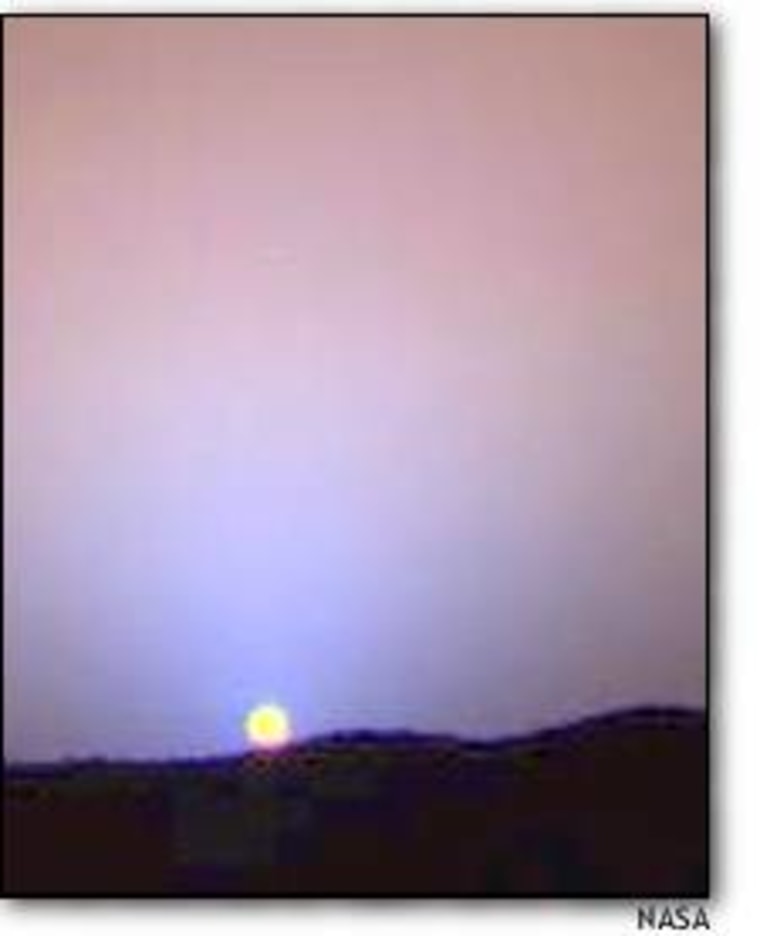Why is the sky blue on Earth and red on Mars? An age-old question with an interplanetary twist is answered by Mark Lemmon, University of Arizona astronomer and a member of the Imager for Mars Pathfinder camera team.
On Earth, the molecules that make up our atmosphere also partly block the sunlight. Mostly, they scatter the light around the sky. And they are much better at scattering blue light than red light (their ability to scatter light falls off sharply as the wavelength of the light gets longer). So, some blue light gets scattered out of the direct sunbeam and goes into the rest of the sky.
On Mars, there is much less atmosphere. In fact, if it weren’t for the dust in Mars’ sky, the sky would be nearly black. That dust, however, blocks light of all colors almost equally, and there is enough dust to limit visibility to about 20 miles. Since the dust is colored by iron oxides (rust), it absorbs the blue light and scatters the red light, giving the sky a rusty color.
Sunsets on Earth have a red, orange or golden color because the sunlight passes through so much atmosphere as it comes over the horizon that all the blue light gets scattered away.
On Mars, while the sky is red during the day, the sunset is blue. The reason for this is that the dust particles always make a blue halo around the sun on Mars, but the halo is only easy to see when the light passes through all the dust while coming over the horizon.
